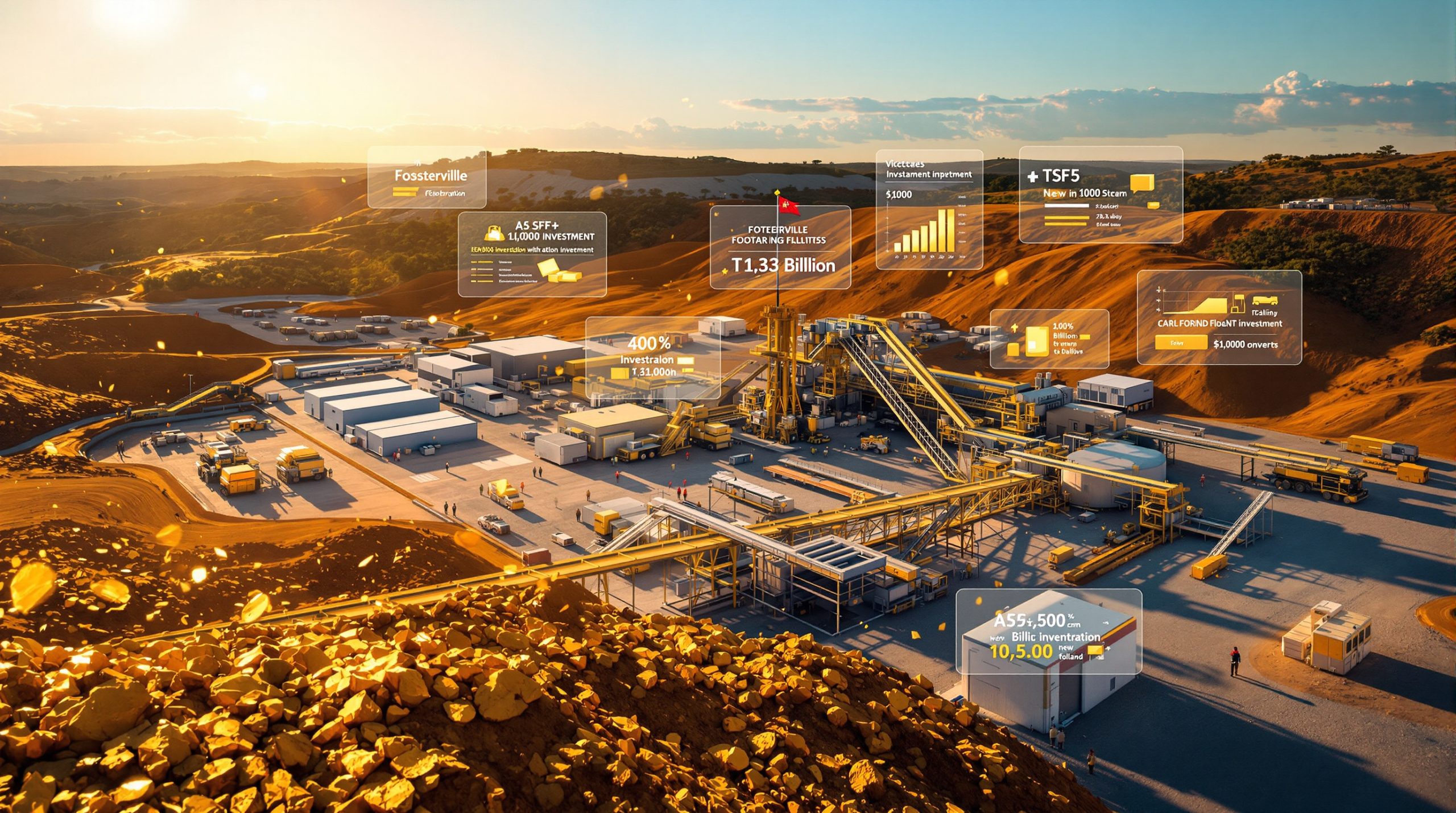The Copper Revolution: How Artificial Intelligence Is Transforming Data Center Demand
The surge of artificial intelligence technology is fundamentally reshaping data center infrastructure, creating unprecedented demand for copper in power distribution systems, cooling infrastructure, and connectivity solutions. This transformation is not merely an evolution but a revolution in how we build, power, and cool the digital backbone of our AI-driven future. Industry analysts are closely monitoring the copper price prediction trends as artificial intelligence and copper demand in data centers continues to reshape market dynamics.
How Are AI Workloads Changing Data Center Design?
The Power-Hungry Nature of AI Processing
Traditional data centers typically consumed 10-15 MW of power, but modern AI-focused facilities now require 50-100+ MW, representing a 5-10x increase in energy consumption. This dramatic shift is reshaping the entire data center landscape.
Power density has increased from 5-10 kW per rack to 30-50 kW per rack in AI-optimized environments, pushing cooling and power distribution systems to their limits and beyond.
According to Don Leavens, Chief Economist at the National Electrical Manufacturers Association (NEMA), "Particularly now with the rise of AI, we are using more energy, which means there's more heat… which means you need more cooling" (Fastmarkets interview, August 2025).
A 2024 NEMA study found that nearly 30% of energy demand in data centers is dedicated solely to cooling, highlighting the significant role thermal management plays in these facilities.
Copper Intensity in Modern Data Centers
The copper requirements for AI facilities are staggering compared to traditional data centers:
- AI data centers require approximately 0.9-1.3 tons of copper per megawatt of capacity
- A typical hyperscale AI facility can consume up to 50,000 tons of copper
- Copper accounts for approximately 6% of a data center's total capital expenditure
- A $500 million data center facility typically contains over 2,000 tons of copper components
According to the Copper Development Association (CDA), copper demand in North America's data center sector is accelerating due to rapid new construction and the sheer volume of copper required for power distribution and grounding systems. This trend is directly contributing to the surging copper demand seen across multiple industries.
Why Does AI Increase Copper Demand in Data Centers?
Power Distribution Requirements
The power infrastructure needs for AI data centers create a copper-intensive environment:
- AI servers draw 4-6 times more power than traditional servers
- Higher power density requires thicker copper busbars and cabling
- Uninterruptible power supplies (UPS) for AI facilities contain 30-40% more copper than traditional systems
- Power distribution units (PDUs) for AI racks contain up to 3x more copper wiring
An estimated 30-40% of data center construction involves electrical components, all containing copper, according to industry experts at NEMA. This percentage is even higher in AI-optimized facilities.
Advanced Cooling Technologies
The thermal management requirements of AI systems have transformed cooling from a secondary consideration to a primary design constraint:
- Liquid cooling systems for AI chips use copper cold plates that contact directly with processors
- Each AI server can contain 2-4 kg of copper in cooling components alone
- Direct-to-chip cooling solutions utilize copper tubing networks throughout server racks
- Cooling infrastructure represents approximately 40% of copper usage in modern data centers
"Newer data centers — especially those built for artificial intelligence — are designed to handle far greater power loads, which means even more copper is needed to safely manage, transmit and ground electricity," explains Adam Kotrba, Flat Products Director at the Copper Development Association (Fastmarkets interview, September 2025).
Connectivity and Data Transmission
The data bandwidth requirements for AI operations further increase copper demand:
- AI workloads require higher bandwidth connections between servers
- Copper-based Category 8 cabling contains 15-20% more copper than previous generations
- High-performance computing (HPC) clusters use copper-intensive InfiniBand and other specialized connections
- The average AI data center contains 30-50 miles of copper cabling
These connectivity requirements are often overlooked in analyses of copper demand, but they represent a significant percentage of the total copper used in data center construction.
How Much Copper Will AI Data Centers Consume?
Current and Projected Consumption Figures
Industry projections paint a picture of rapidly accelerating demand:
- Global data center copper demand is projected to reach 400,000 tonnes annually by 2030
- Peak consumption may reach approximately 572,000 tonnes in 2028
- By 2035, the total copper installed in data centers globally could exceed 4.3 million tonnes
- Annual growth rate in copper consumption for data centers: 8-12% through 2030
According to Fastmarkets' 10-year outlook published in May 2025, copper consumption from energy transition sectors will rise at a compound annual growth rate (CAGR) of 8.9% in the next decade, with data centers becoming an increasingly important driver of this growth. According to BHP's analysis, artificial intelligence and copper demand in data centers could account for up to 2% of global copper consumption by 2030.
Comparison with Other Copper-Intensive Sectors
Data centers are rapidly becoming one of the most significant consumers of copper globally:
- Data center copper demand is growing faster than traditional construction (1-2% annually)
- By 2030, data centers may consume more copper than the entire global wind energy sector
- Data center copper intensity is approaching that of electric vehicles on a per-unit basis
- The sector is becoming a significant driver in overall copper market dynamics
This represents a significant shift from just a year ago, when electric vehicles dominated discussions about copper demand growth. Industry experts now note that AI infrastructure, at least in the US, has become "the bigger story" through 2035.
Where Are AI Data Centers Being Built?
North American Expansion
The geographic distribution of data centers is highly concentrated:
- Virginia, Texas, and Oregon lead in new AI data center construction
- Power availability is becoming a limiting factor in certain regions
- Regional electricity prices are beginning to reflect increased data center concentration
- Regulatory frameworks are evolving to address the resource demands of AI facilities
"You want to be close to a power source and close to the pipeline, and so that's very limiting," explains Don Leavens regarding the constraints on data center locations (Fastmarkets interview, August 2025). This concentration is impacting the US copper production overview as domestic supplies become increasingly strategic.
Global Growth Patterns
While the US leads in AI data center construction, the global landscape is evolving rapidly:
- Nordic countries are leveraging renewable energy and natural cooling advantages
- Singapore is implementing strict efficiency requirements for new facilities
- Middle East is investing heavily in AI infrastructure with copper-intensive cooling systems
- Southeast Asia is emerging as a growth region with significant copper import requirements
According to Olivia Cross, an economist with Capital Economics, "The lack of a clear relationship between data centers and electricity inflation is probably because one of the criteria determining where data centers are built is access to cheap electricity, often due to plentiful supply in local power markets" (Capital Economics report, September 2025). This geographical distribution is a critical factor in the global copper supply forecast for the coming years.
How Are Sustainability Concerns Being Addressed?
Recycling and Circular Economy Approaches
The industry is increasingly focused on the circular economy potential of copper:
- Data center decommissioning recovers 85-95% of installed copper
- Design innovations are making copper components more accessible for end-of-life recovery
- Recycled copper maintains 100% of electrical conductivity properties
- Manufacturers are developing equipment with easier component separation for recycling
Industry experts note that sustainability goals are reshaping how data centers approach copper procurement, with operators increasingly focused on sourcing copper products with higher recycled content.
Efficiency Improvements Affecting Copper Intensity
Technological advances are helping to optimize copper usage:
- Higher voltage distribution systems are reducing overall copper requirements
- Advanced cooling technologies are optimizing copper usage while improving thermal performance
- Modular designs are allowing for more efficient copper utilization
- Innovative alloys are potentially reducing total copper content while maintaining performance
"Our companies are facilitating that re-sensibility through design of products. We recognize that if you bury the copper where it's difficult to get it out of the device, you're not making it as sustainable as it could be," explains Don Leavens (Fastmarkets interview, August 2025).
What Are the Supply Chain Challenges?
Mining and Production Limitations
The rapid growth in demand faces significant supply-side constraints:
- New copper mines typically require 10+ years from discovery to production
- Global copper production capacity is growing at only 1-2% annually
- Projected supply gap of up to 6 million tonnes by 2035 if production doesn't accelerate
- Geopolitical factors are affecting copper trade flows and availability
According to the National Mining Association, copper consumption is expected to increase by more than 110% by 2050, creating significant challenges for global supply chains. As noted by the International Energy Agency, the electricity demands from AI infrastructure will further intensify pressure on energy-intensive copper production.
Domestic Production vs. Global Sourcing
The strategic importance of copper is elevating discussions about supply security:
- US copper reserves are sufficient but face permitting and development timelines
- Critical minerals designations are potentially streamlining domestic copper production
- Friendly trading partners like Chile and Australia remain important copper sources
- Supply chain resilience is becoming a strategic consideration for data center operators
"The copper is here in the United States — we simply need the policies and permitting reforms to access it and meet the nation's growing demand," notes Adam Kotrba of the CDA (Fastmarkets interview, September 2025). This supply challenge is having a significant copper price impact across global markets.
How Are Data Center Operators Responding?
Strategic Material Planning
Forward-thinking data center operators are developing comprehensive strategies:
- Major cloud providers are developing copper procurement strategies 5-10 years in advance
- Long-term supply agreements are becoming common between data center operators and copper suppliers
- Material efficiency is becoming a design priority in new facilities
- Inventory management systems are tracking copper content for future recovery
The volatility in copper prices is also driving more sophisticated hedging strategies, as price fluctuations can have material impacts on cost overruns for projects planned years in advance.
Technological Adaptations
The industry is exploring multiple pathways to address copper constraints:
- Exploring aluminum alternatives for certain applications where feasible
- Developing higher-efficiency systems that require less copper per computation
- Implementing advanced power management to reduce overall copper infrastructure needs
- Investing in on-site renewable generation to reduce grid connection requirements
"These challenges highlight the need for better planning, stronger domestic manufacturing and smart policy support to keep critical projects on schedule," explains Adam Kotrba (Fastmarkets interview, September 2025).
What Does the Future Hold for Copper in AI Infrastructure?
Emerging Technologies and Their Impact
The technological landscape continues to evolve:
- Quantum computing potentially requiring even higher copper intensity
- Edge computing distributing copper demand across smaller installations
- Next-generation cooling technologies may increase or decrease copper requirements
- Photonic computing potentially reducing some copper needs for data transmission
The interplay between these emerging technologies will shape the long-term demand profile for copper in digital infrastructure.
Long-Term Market Projections
Industry forecasts suggest sustained growth with eventual moderation:
- Copper demand from data centers is expected to continue growing through 2040
- Potential plateau as efficiency improvements balance with expansion
- Recycling becoming increasingly important as installed base grows
- Price volatility likely to continue affecting data center construction economics
This copper-intensive growth phase coincides with significant supply constraints, creating both challenges and opportunities across the data center ecosystem as artificial intelligence and copper demand in data centers reshape the global metals market.
FAQ: Artificial Intelligence and Copper Demand in Data Centers
How much copper does a typical AI data center require?
A modern hyperscale AI data center typically requires between 0.9-1.3 tons of copper per megawatt of capacity. For a 100 MW facility, this translates to approximately 90-130 tons of copper, with some larger facilities using up to 50,000 tons in total.
Why does AI require more copper than traditional computing?
AI workloads generate significantly more heat and require more power than traditional computing. This necessitates more robust power distribution systems, advanced cooling infrastructure, and higher-capacity connectivity solutions—all of which rely heavily on copper for electrical and thermal conductivity.
Will copper supply be able to meet AI data center demand?
Current projections suggest a potential global copper supply gap of up to 6 million tonnes by 2035 if production doesn't accelerate. This presents challenges for data center construction, as new copper mines typically require 10+ years from discovery to production.
How are sustainability concerns being addressed in data center copper usage?
Data center operators are implementing several strategies, including designing for easier end-of-life copper recovery, using recycled copper in new construction, optimizing designs to reduce copper intensity, and developing more efficient power and cooling systems that require less copper overall.
What alternatives to copper are being explored for data centers?
While copper remains the preferred material for most electrical and thermal applications in data centers, aluminum is being explored as an alternative for certain power distribution components. Advanced composites and specialized alloys are also being researched for specific applications, though copper's unique combination of electrical and thermal properties makes it difficult to replace entirely.
Seeking Better Returns in the Copper Market?
Discover how artificial intelligence and data centers are transforming copper demand and potentially creating significant investment opportunities by visiting Discovery Alert's discoveries page, where our proprietary Discovery IQ model identifies actionable ASX mineral discoveries in real-time.




